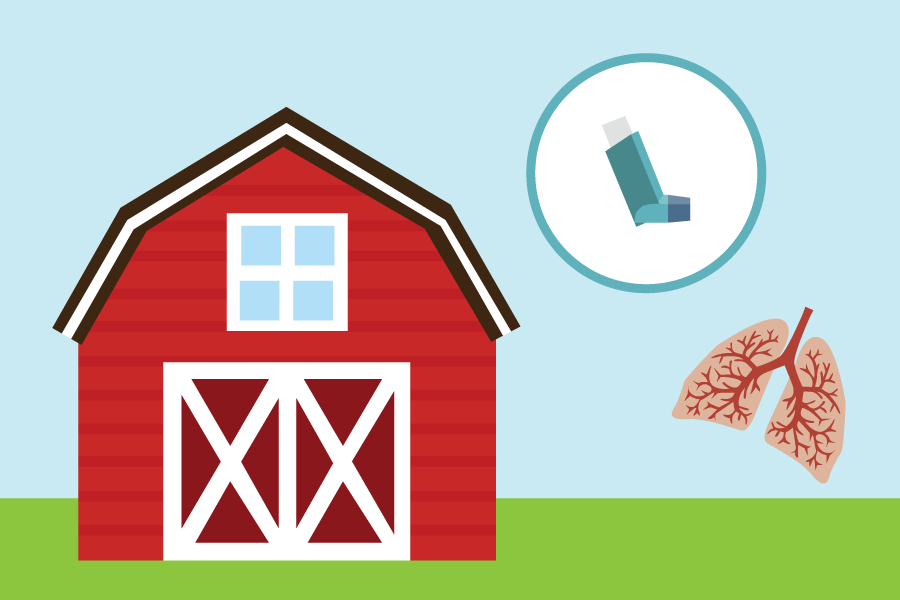
Study looks at lung remodeling in response to ozone exposure
Air quality in California is significantly poor, with over 70 percent of Californians living in areas with unhealthy, polluted air. The state’s central valley region represents a highly impacted area of ozone air pollution due to its geography, vehicle exhaust and hot, stagnant air.
A study awarded as a grant recipient of the UC Davis Environmental Health Science Center seeks to understand the mechanisms of how ozone exposure affects the lungs during critical time periods of development.
High ozone in the atmosphere represents one of the biggest public health impacts, with potential to disrupt lung development, change lung structure and exacerbate respiratory diseases such as asthma.
“Summer ozone in California’s San Joaquin Valley (SJV) is especially bad because of hot and sunny days with stagnant air, lots of driving and the mountains that ring the SJV, hindering the dispersal of ozone and its precursors,” said Cort Anastasio of the UC Davis Department of Land, Air & Water Resources in an email interview.
Ozone is a gas that occurs both in the Earth’s upper atmosphere and at ground level. The protective ozone layer occurs higher up in the stratosphere, whereas the ground level ozone in the troposphere is an air pollutant harmful to breathe.
This gas is one of the main ingredients in smog, and can damage lungs, exacerbate asthma and in some cases lead to death. There is a worsening of asthma and respiratory symptoms on particular days of high ozone warnings.
“It is helpful for students to be aware of high ozone concentrations during the summer so they can plan to exercise outside during the morning when concentrations are lower,” said Ann Dillner, an associate research scientist at the UC Davis Air Quality Research Center.
The formation of ozone does not occur by emission but rather it is formed in the atmosphere by a chemical reaction.
“There are three ingredients needed to make ground-level ozone: nitrogen oxides (which come from vehicles, power generation and other combustion processes), volatile organic compounds (which come from plants as well as vehicles and solvent use) and sunlight,” Anastasio said via email.
Ozone’s biggest effect is seen in children, specifically in exacerbating asthma.
Laura Van Winkle, a professor of respiratory toxicology and principal investigator of the study, hopes to better understand the mechanisms and effects of lung remodeling in response to ozone exposure during lung development.
This information is necessary in order to develop strategies that minimize the effects of harmful lung maturation for children exposed to ozone.
Lung development occurs prenatally, while a baby is inside the womb. However, much lung maturation occurs postnatally, as a child is growing as a child into his or her early adulthood. Around young adulthood, humans achieve peak lung function, and that is the best function ever to be reached throughout one’s lifetime.
“As you age and lose lung function capacity, it impacts one’s ability to resist disease and recover from colds,” Van Winkle said. “People with lower peak function in young adulthood have harder time later in life.”
Previously, ozone-induced lung structural change had been an understudied area in regards to ozone research. The main event that prompted interest for this study was the human epidemiology study on UC Berkeley freshman.
In a sample population of Berkeley students, results showed students who grew up in more polluted environments had significantly reduced lung function compared to students who did not grow up in such a polluted environment.
“What’s concerning about the study on Berkeley students, is it shows that air pollution reduced the peak lung function during the critical lung maturation time period,” Van Winkle said. “The reduced lung function is less normal and is the best they will ever have in their lifetimes.”
The study intends to specifically study the effect of ozone on alveolar growth in the lung. Alveoli are tiny air sacs that allow for gas exchange between the lungs and bloodstream.
Growth of alveoli may be disrupted by ozone exposure by remodeling the expression of key genes and proteins involved in lung growth. In addition, altered alveoli may impact the amount of oxygen provided to the body.
“We hope to get a better understanding of what time frame [of lung development] is most susceptible, how structural change of the lung is affected and the biological mechanisms behind ozone exposure,” Van Winkle said.
Van Winkle hopes to be able to apply her research to the community level and outreach to people in areas most susceptible to high ozone exposure.
“I am in collaboration with the American Lung Association as well as partnering with stakeholder groups in the SJV to educate people about why it’s important to stay indoors when air pollution is bad,” Van Winkle said.
Further information about air quality in California can be found on the American Lung Association website, with detailed statistics about prevalence of smog in local areas as well as updates on air-pollution regulations both for the state and federal level.
“Students with compromised lungs should be especially careful to monitor air pollution conditions,” Dillner said.
Looking for better ways to advise susceptible populations on when to be most careful in high ozone environments is the first step into preventing and managing possible health effects.
Written by: Shivani Kamal – science@theaggie.org



